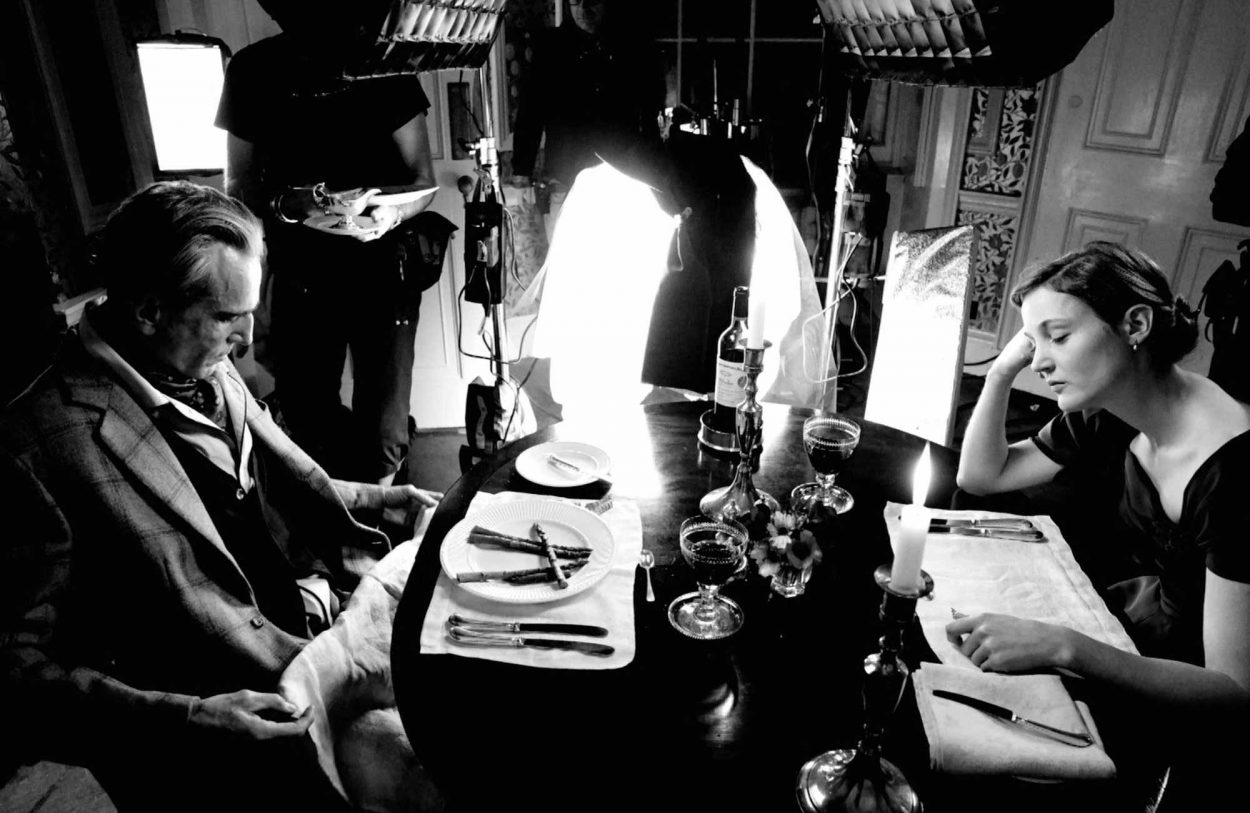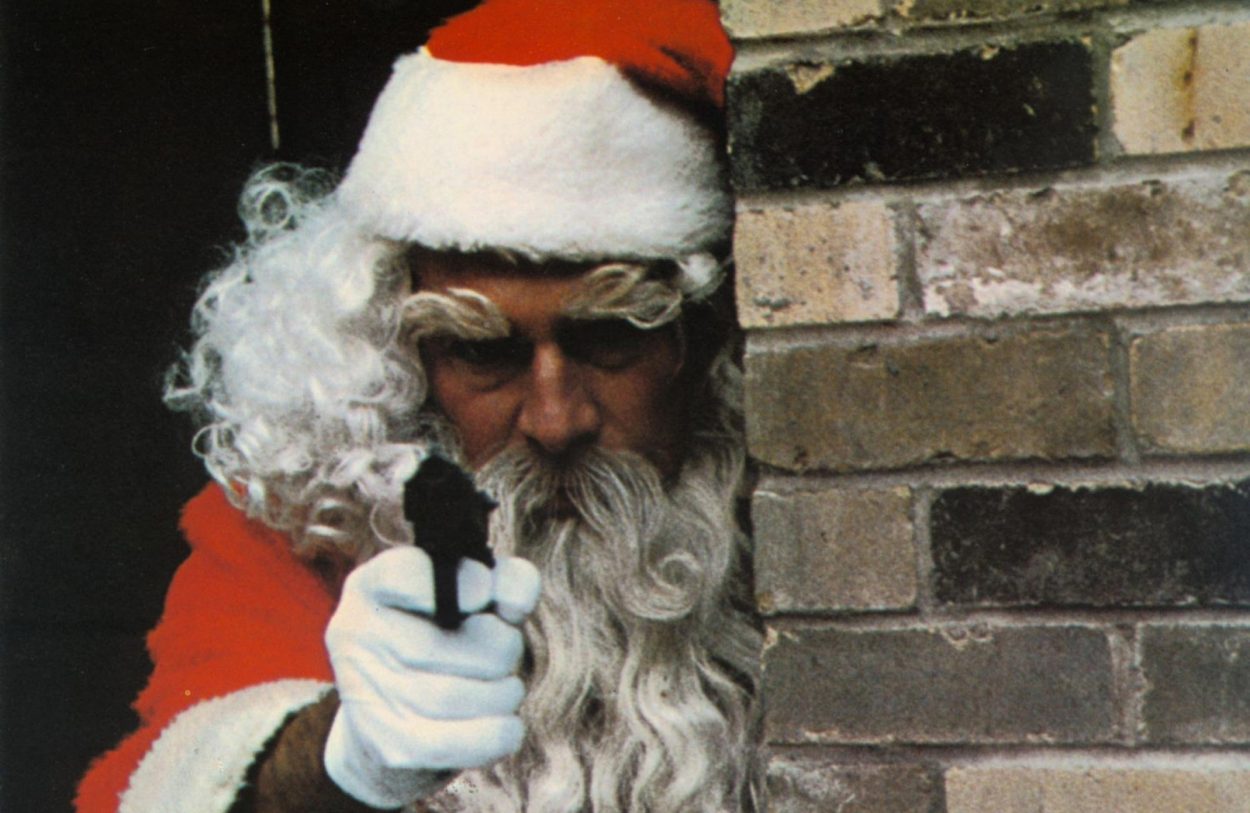ULZANA’S RAID (1972)
dir – Robert Aldrich
When Francis Ford Coppola’s The Godfather won Marlon Brando the best actor award at the 1972 Academy Awards, the actor refused it on protest grounds of the inhuman depictions of Native Americans in American movies. Grounds of which John Ford’s Drums Along the Mohawk, Fort Apache, and The Searchers would be case in point. But in The New Hollywood of the seventies, the reigning breed of directors, the film school educated Movie Brats (Coppola, Bogdanovich, Scorsese, Spielberg, Lucas, Milius and Schrader), it was the films of the older Hollywood picture makers that critic Andrew Sarris categorized as The Pantheon that the Movie Brats publicly revered, even using Sarris’ classification of “Pantheon” to describe them.
Scorsese tells Schrader during a Q&A in the front of the publication of the Taxi Driver script:
“…in 1961 I read, in FILM CULTURE, Andrew Sarris’ article based on the theories of CAHIERS, the POLITIQUE DES AUTEURS, which is old history now. But I went through the lists and underlined every one of the films I saw and put a star next to the ones I liked. Of all the directors, I found I liked the “Pantheon” directors the most. I liked John Ford’s films best – and they weren’t all westerns either.”
In the Andrew Yule book about Bogdanovich, “Picture Shows,” Peter tells Yule that Sarris and New York Times second-string critic Eugene Archer were big influences in his early days of film appreciation:
“They opened my eyes to films, getting me to see stuff like Howard Hawks’ Land of the Pharaohs and John Ford’s Fort Apache. I’d seen lots of films by both these guys, but I’d never noted their names as the common factor, it had never sunk in… I’d always loved Hawks without knowing he was the director. I loved Rio Bravo when it came out, then I said, ‘Wait a minute, he did Red River,’ and I put it all together. I’d liked all his films, but I hadn’t known who he was!”
Now with a few exceptions (Haig, Manoogian, Scorsese’s teacher at NYU for example), this reverence for John Ford and Alfred Hitchcock was not something they were taught in university. Most film schools in the late sixties would be quicker to screen Children of Paradise, or La Strada, or La Grande Illusion than they would She Wore a Yellow Ribbon.
In the late sixties, Australian director Richard Franklin was a film student at Southern California’s UCLA. Franklin would later establish himself as the Hitchcock of Australia in the eighties with the witty thrillers (usually written by talented pulp screenwriter Everette DeRoach) Patrick, Road Games (for years my favorite Australian movie), and Psycho II. But back in his university days, taking a page out of Bogdanovich’s playbook, he got in touch with both Hitchcock and Ford, inviting them to come and speak to the students. Even managing to get an invite from Mr. Hitchcock to visit the set of his then current film, Topaz. Later in the class, Franklin spoke up about one subject or the other. And the class instructor said to him, “Oh yeah, you’re the one who keeps inviting all these hacks to speak to students.” However, this reverence for the old guard Hollywood picture makers the Movie Brats loved wasn’t necessarily shared by their competing group of filmmaking colleagues, The Post Sixties Anti-Establishment Auteurs (Altman, Rafelson, Penn, Perry, Ashby, Schatzberg and Cassavetes).
Now like The Movie Brat generation, these Anti-Establishment Auteurs watched old movies growing up, too. Bob Rafelson’s first film, Head, starring the fabricated rock group The Monkees, and written by Jack Nicholson, is basically a collection of skits lampooning the old movies on The Late Show. Micky Dolenz and Teri Garr in a Cavalry and Indians put on, Davy Jones and Annette Funicello in a Golden Boy parody, and The Monkees playing dandruff in the greasy black hair of Victor Mature. But as opposed to Bogdanovich, Scorsese, Spielberg, and Milius, when this era of filmmakers watched old movies on television, they weren’t as enamored of what they saw. When they watched John Ford westerns, they were appalled at the jingoistic white supremacy on display. When they watched The Searchers, they didn’t see a conflicted man trying to find his place in society that had out lived his usefulness. They saw a movie about an Indian hating racist bastard who is ultimately offered absolution by the grateful community (i.e. White Society). They rejected the morality of the wrap up at the end of Ford’s Fort Apache. When John Wayne’s character Captain Kirby York, who’s been at odds with Henry Fonda’s Lt. Cl. Owen Thursday over his brutal racist methods regarding the Native American’s all movie long, later lionizes the racial cleansing nincompoop in death, the meaning is clear…White Supremacy. Now this White Supremacy is cloaked under different names… Americanism… Esprit De Corps… Civilized Society… (i.e. White Society), but in the context of Ford’s Fort Apache, that’s just a bramble bush by a different name. And frankly, that meaning was clear even in 1948 when the movie was released. American (white) audiences not only didn’t care, for the most part they agreed. One who didn’t agree was maverick filmmaker Robert Aldrich.
Ulzana’s Raid is hands down Aldrich’s best films of the seventies, as well as being one of the greatest westerns of the seventies. One of the things that makes the movie so remarkable is it isn’t just a western; it combines the two genres that Aldrich was most known for, westerns and war films. Many movies have been made about the conflict between the Apaches and the American Calvary but only Aldrich’s film dealt with the Apache Wars as a genuine military conflict. Or more to the point, a war film about a giant nationalistic military machine battling a guerrilla army it can’t comprehend. At this point in time, Aldrich seemed obsessed with Vietnam. Overtones of it show up in The Dirty Dozen, everything about Too Late The Hero seems designed to invoke it and Twilight’s Last Gleaming seemed to be made so Aldrich could voice his opinion about it .
But before Hollywood finally turned its camera towards it in the late seventies (Boys in Company C & Go Tell the Spartans), Vietnam allegories were the only avenue of expression. Now in a world where hundreds of Vietnam movies exist (Filipino filmmaker Cirio H. Santiago has made over ten. Not to mention all the Italian Rambo rip-offs that clogged the arteries of video stores all through the eighties), these allegories can’t help but seem quaint at best, and naive at worst. But not Ulzana’s Raid. Because it’s examination of the U.S. Military involvement with the Apache Wars is a compelling enough subject on its own. As is the attention to the strategy of warfare on both sides of the conflict. The legendary writer Alan Sharp’s screenplay offers no easy interpretation of either events or character motivation. The reasons that led Ulzana to run off the reservation with twenty men and engage in brutal bloody slaughter of all who lay in his path, is only vaguely hinted at (being short-changed by the man who sells beef to the reservation). It would have been very easy to lay the blame on some pigheaded Indian-hating white officer (like Fonda’s Col. Thursday in Ford’s Fort Apache), so we could be frustrated by the unfairness of it all. Or to romanticize Ulzana by casting a young good looking dark-haired (white) actor like Robert Blake in Tell ’em Willie Boys Here or Robert Forster in The Stalking Moon. Or illustrate the events leading up to the raid, and show how events just spiraled out of control (like in Robert Young’s The Ballad of Gregorio Cortez). But neither Sharp nor Aldrich engage in such dramatization niceties. Joaquin Martinez, who plays Ulzana is pug ugly perfect, and, aside from some ritualistic singing, has no lines in the film. Yet he’s not the monster in a monster movie that killer Indian “Salvaje” is in The Stalking Moon. He’s a partisan, fighting an occupying army. His goal isn’t to win, it’s to spill as much of the occupiers’ blood as possible. Yet while the film makes no attempt to make Ulzana sympathetic, he gets our and Aldrich’s sympathy anyway. It’s easy for audiences to root for the Indians in westerns now, no matter what they do. But Aldrich and Sharp make it difficult, but we still root for them nonetheless. I feel this is Burt Lancaster’s best performance of his later years. The character of the old white Indian scout, who’s seen it all, and understands the nature of the native people in ways that no one who wears a blue uniform ever will, is a staple of Alan Sharp’s western screenplays. In Ulzana’s Raid that part, Ke-Ni-Tay, is played by Mexican movie star Jorge Luke, and he owns the picture. When white wet-behind-the-ears West Point Lt. DeBuin (Bruce Davison) asks Luke’s Ke-Ni-Tay why his people are so cruel, he answers without any Indian mystic mumbo jumbo or a shred of political correctness; “That’s just the way they are. They’ve always been that way.” Slowly during the course of the movie, Luke’s Ke-Ni-Tay, little by little, takes center stage. So much so that despite all the cruel killings Ulzana and his men commit, audiences feel more hostility towards Bruce Davison’s Lt.DeBuin for how he treats Ke-Ni-Tay than anybody else in the film (Aldrich didn’t hate Davison’s West Pointer, “He doesn’t know shit”). To me the Indian scout working with the white man’s military against his own people, is the most despicable character in the conflict. Yet by film’s end it’s Luke, not Lancaster, that emerges as the closest thing the movie has to a hero, without avoiding the troubling aspects of his character, or his position.
In Peter Bogdanovich’s book “Pieces of Time,” he tells an interesting story of being at the White House in 1972 and meeting President Nixon. Since the thing one would talk with Peter about is movies, Nixon and Bogdanovich drift into a conversation of Ford’s The Man Who Shot Liberty Valance.
Bogdanovich is understandably tickled as hell to be talking to the President in the White House about one of his favorite directors and one of his favorite movies. Now while the ending of The Man Who Shot Liberty Valance isn’t as offensive as the ending of Fort Apache, because Wayne’s Tom Doniphon isn’t as offensive as Fonda’s Lt. Col. Thursday, it’s still the same morale, “Print the Legend.” Which by 1969 seemed dubious advice to White Europeans indulging in manifest destiny over indigenous natives. Of course Nixon likes John Ford. Who’s the audience for Ford’s apologias? Nixon’s silent majority, that’s who. The Anti-Establishment Auteurs wanted to remake Ford’s films too, but not the way Peter, and Steven, and Big John Milius did. They wanted to remake Fort Apache from the Apaches perspective. And in the case of Arthur Penn with Little Big Man, Ralph Nelson with Soldier Blue, and Robert Aldrich (not post-sixties, and hardly a hippy, but absolutely anti-establishment) with Ulzana’s Raid, they did.


